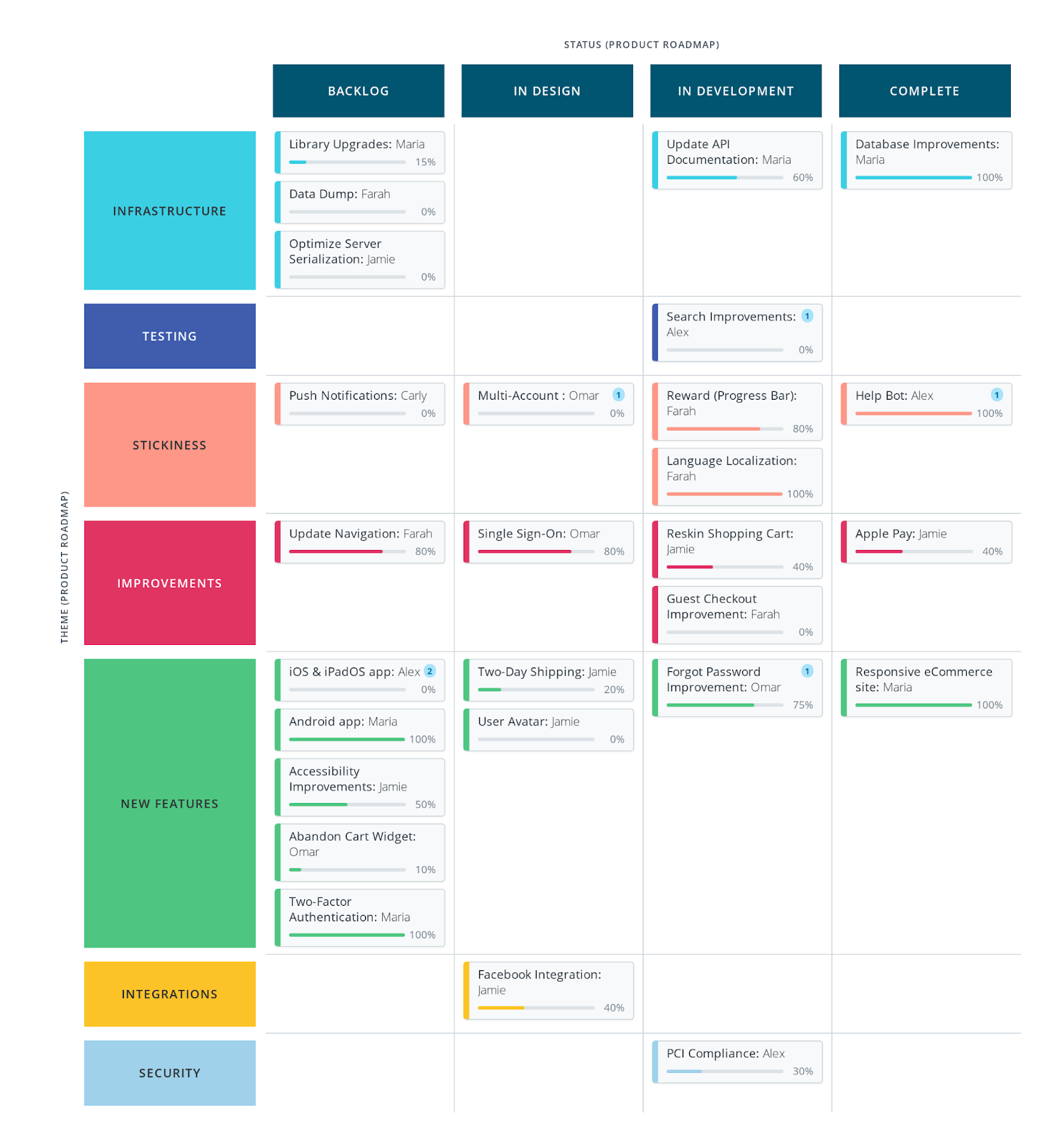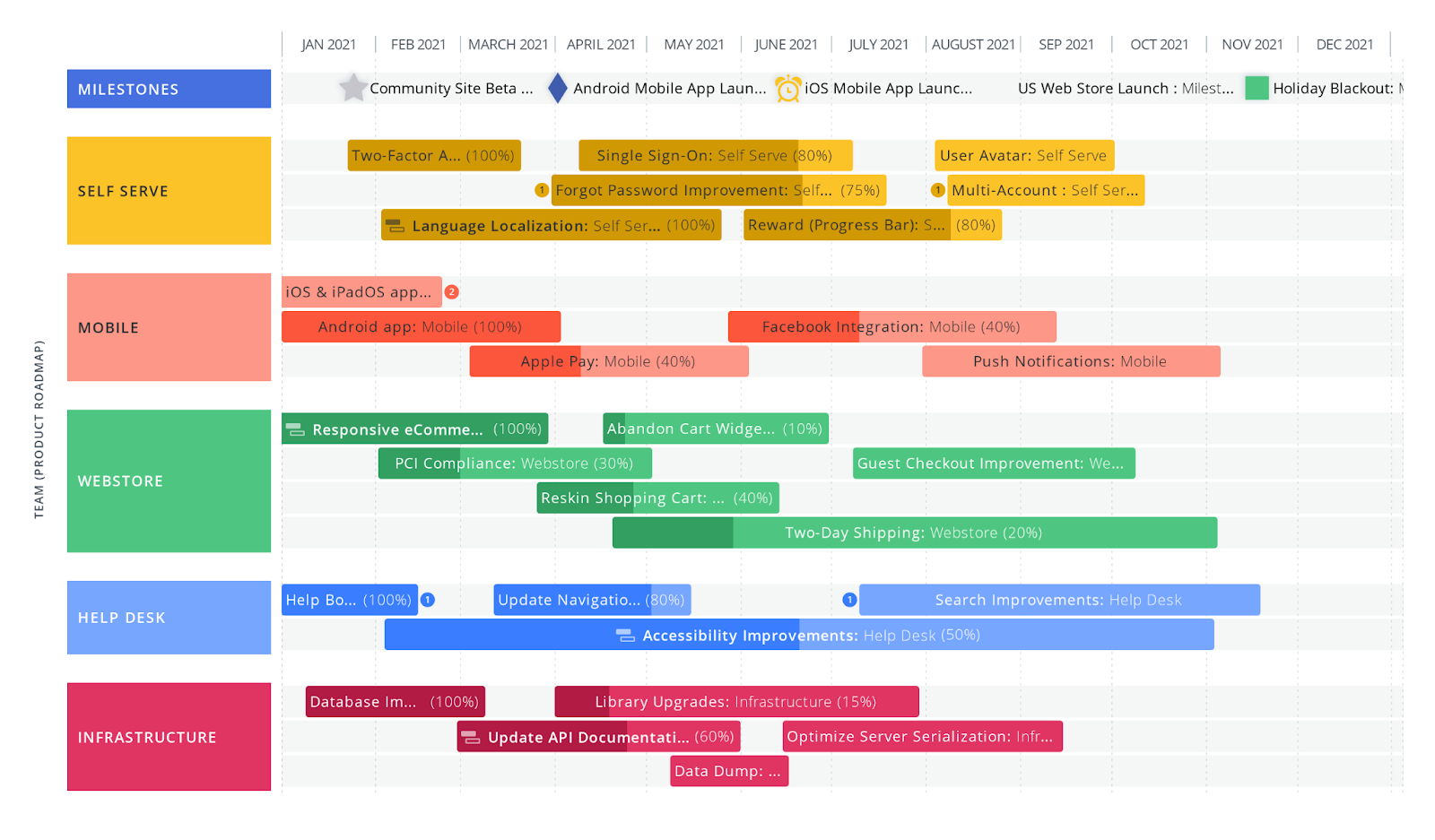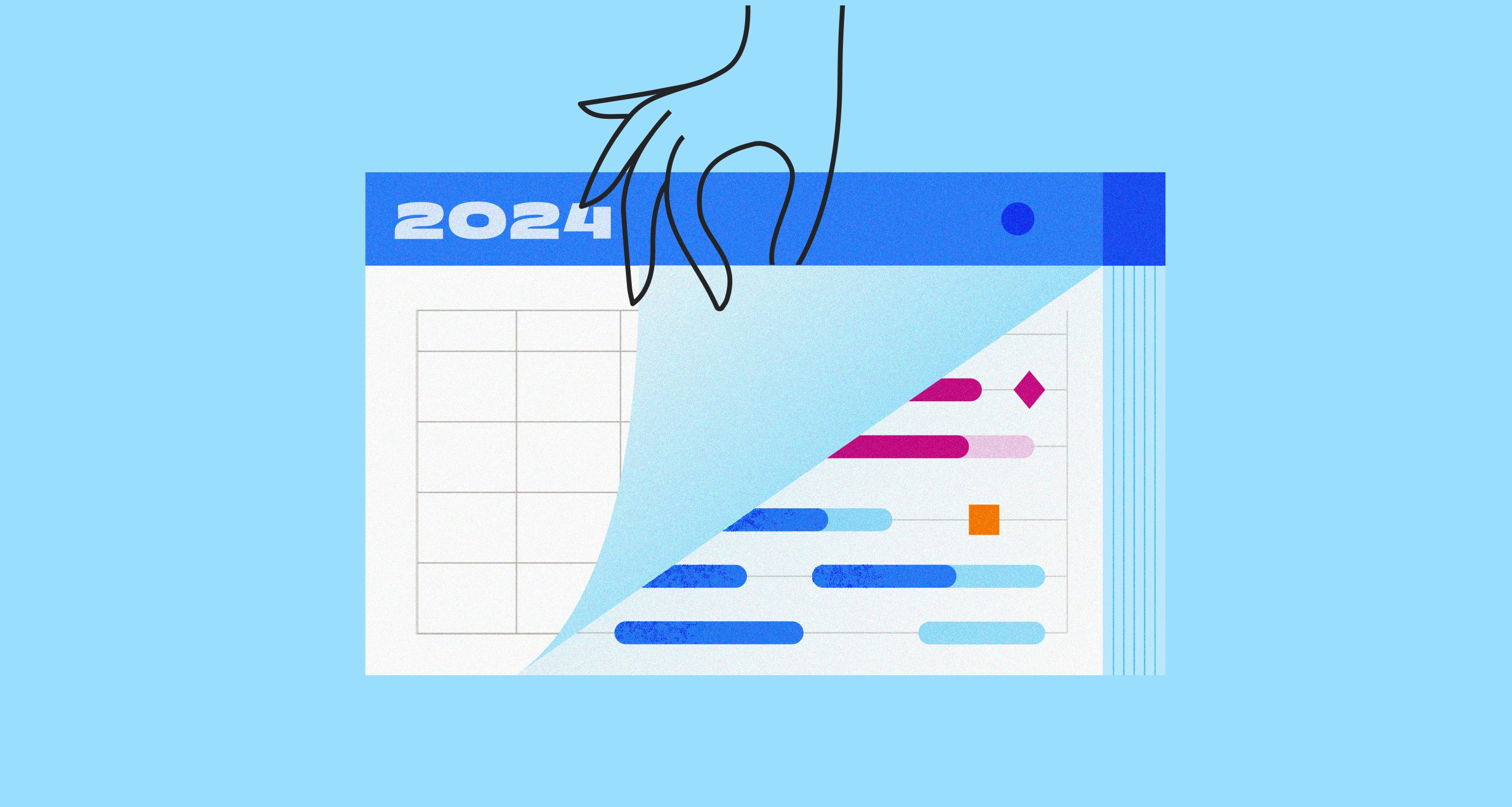Product management professionals are notoriously hard workers. They survey the market to identify customer needs and business objectives. They then oversee the development, marketing, and launch of a commodity or service. As with project management, product management is a critical role with heavy responsibilities — and product managers need the right tools to succeed.
That’s where a product development roadmap comes in. Various project management environments, from IT to construction, use roadmapping to visualize an initiative’s planned progress — and product managers do the same. Roadmapping helps create a step-by-step action plan, outlining a new product’s use case, establishing priorities, and plotting development direction over the product life cycle.
But creating a roadmap from scratch is time-consuming, especially when overseeing multiple initiatives. Thankfully, there are many free product management templates available online. We’ve compiled a list of options, including product plan templates, product design templates, and product release templates, all of which may streamline your roadmapping efforts.
Benefits of using a product management roadmap template
When paired with project management software like Jira, a roadmap is a powerful information-gathering and communication aid that builds alignment, fosters engagement, and provides clarity.
A pre-made roadmap template acts as a checklist to manage details in your product requirement document (PRD). It also ensures product managers, project managers, and product owners are all on the same page regarding goals and outcomes. And by keeping product roadmap documentation accessible to every stakeholder — including the development team — everyone can monitor progress and understand next steps to plan their workflows accordingly.
8 great product management roadmap templates
Roadmap templates are typically customizable and include functionality that lets the product team hit the ground running. Most templates offer the following benefits:
- Tracking: Monitor roadmap activity for easy progress visibility.
- Flexibility: Switch between swimlane and timeline views and export results using your choice of formats.
- Collaboration: Use features designed to facilitate documentation sharing and discussion.
- Resource allocation: Designate resources to specific teams or departments according to roadmap entries.
- Due dates: Keep everyone on task by adding milestones and deadlines to the roadmap.
- High-level schedule: Prevent timelines from becoming too granular by organizing initiatives into looser time buckets.
- Agile frameworks: Organize your roadmap by theme, team, or status.
- Data sets: Filter data and save the information for later without recreating a new roadmap each time.
Here are some of the best available product roadmapping templates and their unique features.
1. Product roadmap
Product roadmaps allow managers to visually communicate high-level strategy items to stakeholders. These details include metrics such as key performance indicators (KPIs) and objectives and key results (OKRs). Roadmaps may or may not include a timeline, but they always outline technical considerations and upcoming features to illustrate a product’s expected evolution.
Timeline view

Swimlane view

2. Product development roadmap
Use a product development template to visually illustrate how processes and tasks will support project objectives. This helps build stakeholder alignment over every phase of your product’s growth, from initial release to maturity. It’s an essential strategic planning tool, guiding a product’s entrance into the marketplace, evolution, and response to competitive analysis.
Timeline view

Swimlane view

3. Product launch roadmap
Help stakeholders visualize your go-to-market strategy from pre to post-launch using a product launch roadmap to outline every process phase. The framework communicates the tactics involved in the campaign, ensuring every team — development, marketing, and sales — is aware of their responsibilities and timelines.
Timeline view

Swimlane view

4. Release roadmap
A release roadmap allows the product manager to prioritize improvements, new features, and bug fixes throughout upcoming release cycles. These roadmaps typically outline development activities for 3–6 months, but you can customize them for shorter sprints. The template also provides the flexibility to pivot the roadmap across development, QA, and marketing teams based on target audience feedback and product market fit.
Timeline view

Swimlane view

5. Design roadmap
Design roadmaps lend transparency to the creative process, establishing structure and alignment. These templates outline critical product development phases, including research, prototype development, and delivery. They also flag crucial deadlines and help designers understand their responsibilities at every turn.
Timeline view

Swimlane view

6. Website roadmap
A website roadmap outlines the key phases of development, such as wireframe development, content creation, and user experience (UX) testing. They relieve pain points and bottlenecks by helping managers pinpoint risks, ensuring the work flows smoothly between teams.
Timeline view

Swimlane view

7. Feature roadmap
Using the information from PRDs, feature roadmaps establish and track the direction and development progress of a product’s essential features, generating reports and updates for team members and other stakeholders. These documents help managers with resource allocation throughout development cycles and prioritizing releases based on value propositions and user feedback.
Timeline view

Swimlane view

8. Scrum roadmap
For product managers working in an agile environment, Scrum roadmaps visually showcase the product development workflow. When juggling concurrent projects, teams use these templates to build transparency into the product management process, prioritize backlogs, and track activities throughout the sprint cycle. As a shared resource across teams, a Scrum template also fosters improved communication between the product manager, owner, and developers, ultimately leading to better results.
Timeline view

Swimlane view

Get started with Roadmunk by Tempo
Product management is a demanding profession, and adding templates to your practice can help streamline planning, increase team efficiency, and deliver better products to the consumer. All these templates and more are available and editable within Tempo’s Roadmunk roadmapping platform. Whether you’re working on a single project or managing a portfolio using Tempo’s Structure software, you’ll find easy-to-use, fully customizable templating options for you and your team.









